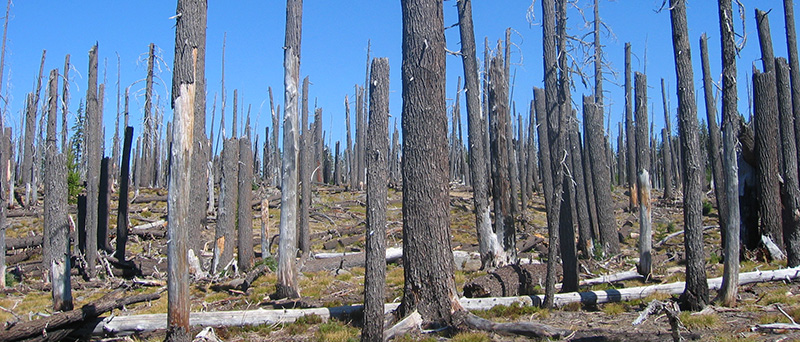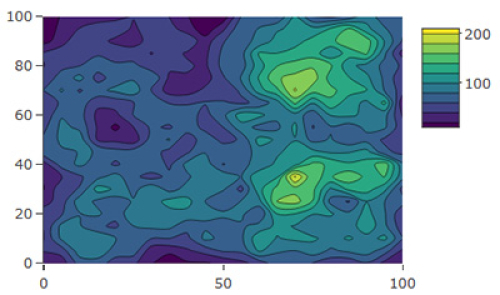PNW-PSP data are a fundamental component of studies conducted by our research partners and collaborators at other institutions. They are able to leverage the plot network and its data to further their research programs and secure outside funding. In return, our collaborators provide invaluable assistance with data collection and data analyses. Moreover, the reports and publications they produce help diversify and expand the scope of PNW-PSP, as exemplified by the stories below.
The Effects of Climate Change on Plant Communities at Mt. Rainier
For the past nine years, Dr. Janneke Hille Ris Lambers and her students at the University of Washington have been using the permanent plot network at Mt. Rainier National Park to study how climate change may affect the altitudinal range limits of forested plant communities in comparison to other factors such as competitive interactions or edaphic conditions of a site. For more information: Hille Ris Lambers Lab Research
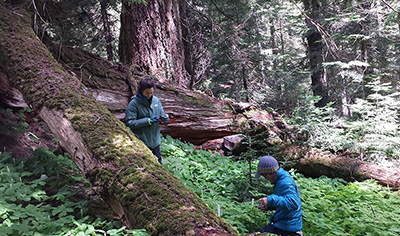
Old-growth, Disturbance, and Legacies: Fraser Experimental Forest, Colorado
Dr. Brian Harvey has resurrected the historic Wilm/Dunford plots at Fraser Experimental Forest in Colorado, first established in 1938 and last measured in 2004. In 2018, Dr. Harvey and his team measured and stem-mapped more than 9,000 trees (!) in the plots to begin exploring how tree mortality caused by the mountain pine beetle is influencing the long-term successional trajectories and fuel loading of thinned and unthinned high-elevation forests. For more information visit the Harvey Lab's Research page.
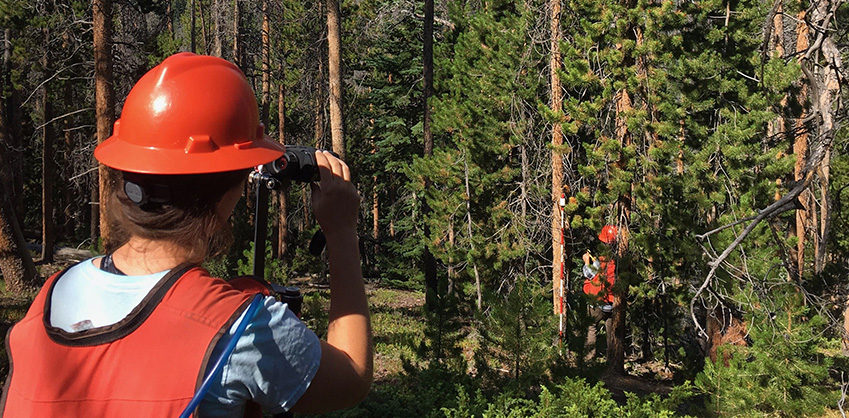
Species Distributions in Temperate Rainforests
Dr. Carrie Woods from the University of Puget Sound studies the distribution and diversity of non-vascular epiphytes on trees of the Olympic Peninsula and elsewhere. One facet of this research is looking at long-term demography of tree seedlings and saplings in relation to moss communities on nurse logs and the forest floor in three PNW-PSP permanent plots on the Olympic Peninsula.
For more information about this project: Moss Goggles: Summer Research Gives Biology Students a Close-up View of the Field
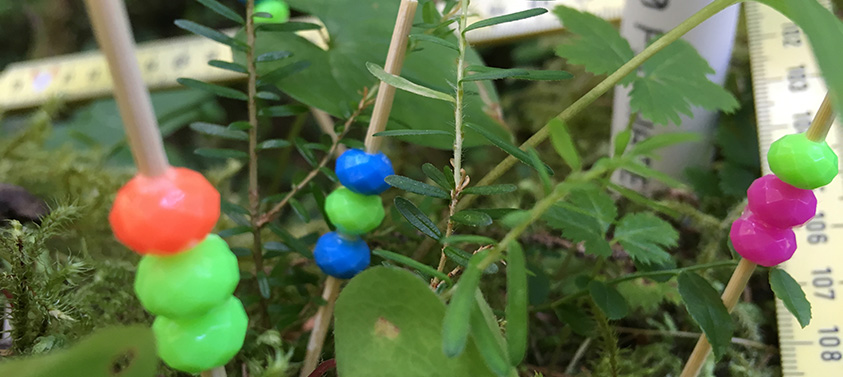
Patterns of Biodiversity and Mechanisms of Community Assembly
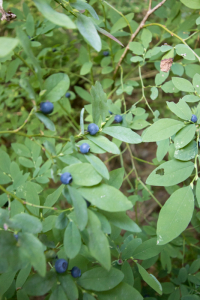
Dr. Joseph LaManna (Marquette University) is leveraging the permanent plot network at the HJ Andrews for his cutting-edge research. For more information see this story: "Big Plot" Coming to the HJ Andrews.
Long-Term Studies of Secondary Succession in Douglas-fir Forests of the Pacific Northwest
Since the late-1980s, Dr. Charles Halpern (UW) has overseen a long-term study on secondary plant succession in two watersheds at the HJ Andrews Experimental Forest. In the 1960s, the entirety of Watershed 1 at HJA was clearcut and broadcast-burned; Watershed 3 was patch cut and burned. Beginning in 1979, understory plant communities and the developing forest were censused on regular intervals. Using this extensive data set, Dr. Halpern and his colleagues have published numerous peer-reviewed papers on succession-related topics including species diversity, tree mortality, biomass accumulation and ecological theory. FMI: http://faculty.washington.edu/chalpern/HJA.htm
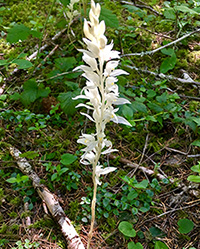
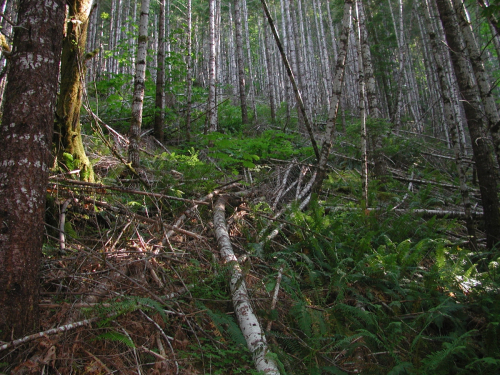
Long-term Effects of Severe Fire on a High-Elevation Forest in Oregon
Dr. Steve Acker and Jane Kertis, ecologists with the US Forest Service, are the lead investigators on a study to track long-term recovery of a high-elevation forest following high-severity wildfire. This collaborative study, now in its 20th year at the Torrey-Charlton Research Natural Area in the Willamette National Forest, has led to insights on snag dynamics, post-fire fuel loads, and the rates of at which high-elevation forests regenerate following fire (see publications).
